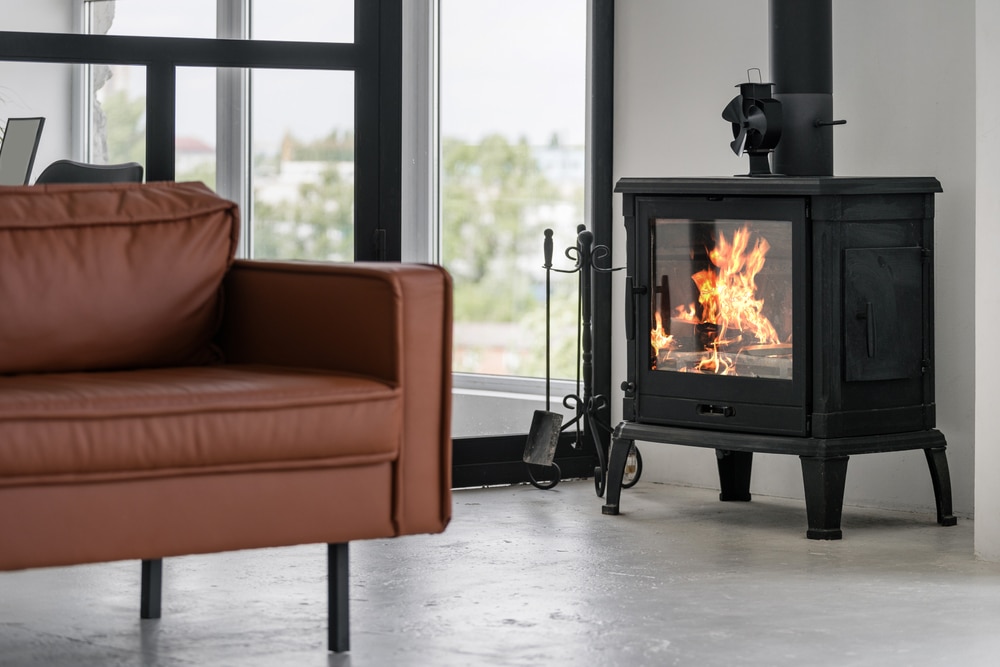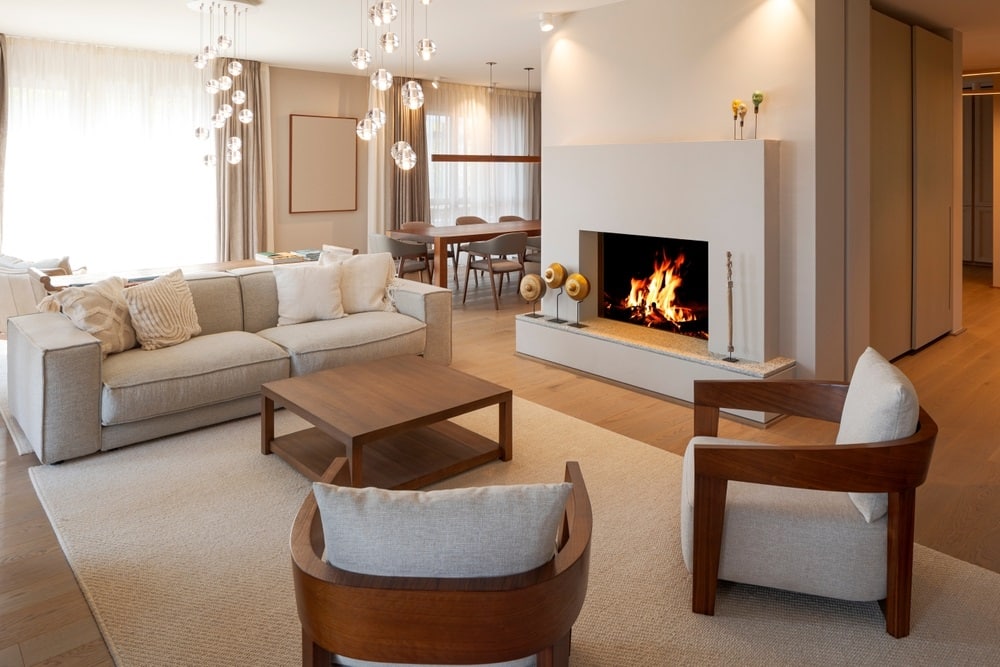Understanding the Basics: Gas vs. Wood Fireplaces
Before diving into the benefits, it’s important to understand what sets gas and wood fireplaces apart.
Wood fireplaces are the classic option many homeowners picture—a hearth filled with burning logs that crackle and pop, delivering a natural flame. These fireplaces require a chimney or flue to safely vent smoke and combustion byproducts outside.
Gas fireplaces, on the other hand, operate by burning natural gas or propane. They can be direct vent, ventless, or have a traditional chimney, depending on the model. Gas fireplaces often offer remote control operation and customizable flame settings, blending modern convenience with the warmth of a fire.
Installation and Maintenance: What to Expect
When choosing between gas and wood fireplaces, installation and upkeep are key factors.
Gas Fireplaces: Simplified Installation and Maintenance
Gas fireplaces generally have easier installation requirements, especially models that use direct vent or ventless systems. These units can often be installed without a traditional chimney, making them a flexible option for many homes. The installation process tends to be quicker and less invasive.
Maintenance for gas fireplaces is relatively low. Because they burn cleanly, there is no ash or soot to remove regularly. Homeowners should schedule an annual professional inspection to ensure gas lines and venting systems are functioning properly and safely.
Wood Fireplaces: Traditional Setup with More Upkeep
Installing a wood fireplace involves more extensive work, including building or maintaining a chimney and flue system. Proper ventilation is critical to safely channel smoke outside the home. This complexity means higher installation costs and time.
Maintenance for wood-burning fireplaces is more involved. Regular chimney sweeping is necessary to remove creosote buildup—a flammable residue that can accumulate in the chimney and pose a fire risk. Additionally, ash removal and inspection for cracks or damage in masonry or flue liners are part of ongoing upkeep to keep your fireplace safe and efficient.
Environmental Impact and Energy Efficiency
Sustainability and efficiency are increasingly important to homeowners, and fireplaces differ significantly in these areas.
Gas Fireplaces: Cleaner Burning and Efficient Heat
Gas fireplaces burn natural gas or propane, which produce fewer pollutants and particulate matter compared to burning wood. This cleaner combustion helps reduce indoor and outdoor air pollution, making gas fireplaces an environmentally friendlier option.
In terms of energy efficiency, gas fireplaces can be very effective. Many models allow precise control over flame size and heat output, ensuring you only use the fuel necessary to warm your space. This controllability translates into less wasted energy and more consistent heating.
Wood Fireplaces: Renewable Fuel but Higher Emissions
Wood fireplaces use a renewable resource—firewood—which can be sustainably sourced. However, burning wood produces smoke, particulate matter, and other emissions that contribute to air quality concerns. Incomplete combustion in some fireplaces can also lead to wasted fuel and lower heating efficiency.
While wood fireplaces provide natural radiant heat that many find appealing, they generally lose more heat up the chimney compared to sealed gas units, making them less efficient in some cases.

Cost Considerations: Installation, Operation, and Maintenance
Budget is often a decisive factor in choosing a fireplace type.
Installation Costs
Gas fireplaces usually cost less to install, especially if you already have a gas line in your home. Ventless or direct vent models require minimal structural changes. Wood fireplaces often involve higher initial expenses due to chimney construction or upgrades and masonry work.
Operational Costs
Fuel prices vary by location and season. Natural gas tends to be more consistent and, in many regions, more affordable and convenient than purchasing firewood. Wood requires storage space and effort to source and prepare, which can add indirect costs.
Maintenance and Repairs
Wood fireplaces typically demand higher maintenance expenses over time, including chimney sweeping, repairs to masonry or flue liners, and ash disposal. Gas fireplaces have fewer moving parts and burn cleanly, which generally results in lower maintenance costs and fewer repairs.
Ambiance and Aesthetic Appeal: Setting the Mood
One of the biggest factors homeowners consider is the feel and look a fireplace adds to their home.
Wood Fireplaces: Classic Charm and Atmosphere
There’s a timeless allure to a wood-burning fireplace. The crackling sound of logs, the natural flicker of flames, and the subtle aroma of burning wood create a cozy and rustic ambiance that many find irresistible. Wood fireplaces are often the centerpiece of traditional-style homes and add a nostalgic warmth that appeals to many.
Gas Fireplaces: Modern Convenience Meets Warmth
Gas fireplaces offer the advantage of convenience and control. With the flip of a switch or remote control, you can enjoy instant flames without the mess of logs and ashes. Modern gas units come in a wide variety of styles—from sleek and contemporary to designs that mimic the look of real wood flames—allowing you to match your fireplace to your home décor. The clean operation means you can enjoy the warmth and beauty without the cleanup.
Safety Considerations: Protecting Your Home and Family
Safety is a critical aspect when choosing and operating any fireplace.
Gas Fireplaces: Enhanced Safety Features
Gas fireplaces reduce the risk of sparks or embers escaping into the room since they operate within sealed units. Many models include automatic shut-off valves and sensors to detect unsafe conditions, making them a safer option for families with children or pets.
Wood Fireplaces: Vigilance Required
While wood fireplaces provide authentic ambiance, they come with increased risks if not properly maintained. Creosote buildup can ignite chimney fires, and flying embers may escape without adequate screens. Regular inspections, proper ash disposal, and use of safety screens are essential to mitigate these risks.

Making the Right Choice for Your Home
Deciding between a gas or wood fireplace comes down to your lifestyle, priorities, and home setup.
-
- If you want convenience, lower maintenance, and cleaner burning, a gas fireplace may be the best fit.
- If you value traditional ambiance, the experience of a real wood fire, and don’t mind regular upkeep, a wood fireplace might be right for you.
- Consider your budget for installation and operation, your home’s existing infrastructure, and local regulations about emissions or wood burning.
Consulting a professional chimney and fireplace expert can provide valuable insights tailored to your home’s structure and your heating goals.
Making Your Fireplace Decision with Confidence
Both gas and wood fireplaces bring warmth and charm to a home, but they serve different needs and lifestyles. Gas fireplaces shine with their ease of use, efficiency, and safety features, making them an ideal choice for modern homeowners seeking convenience. Wood fireplaces offer a traditional, sensory-rich experience that connects you to nature’s elements, albeit with increased maintenance.
Take time to evaluate your home, budget, and preferences carefully. Whether you choose gas or wood, regular maintenance and professional inspections are vital to keep your fireplace safe and enjoyable for years to come.
If you’re ready to explore your options or schedule a professional chimney inspection, contact a trusted chimney service provider today to ensure your fireplace is safe, efficient, and perfectly suited to your home.

